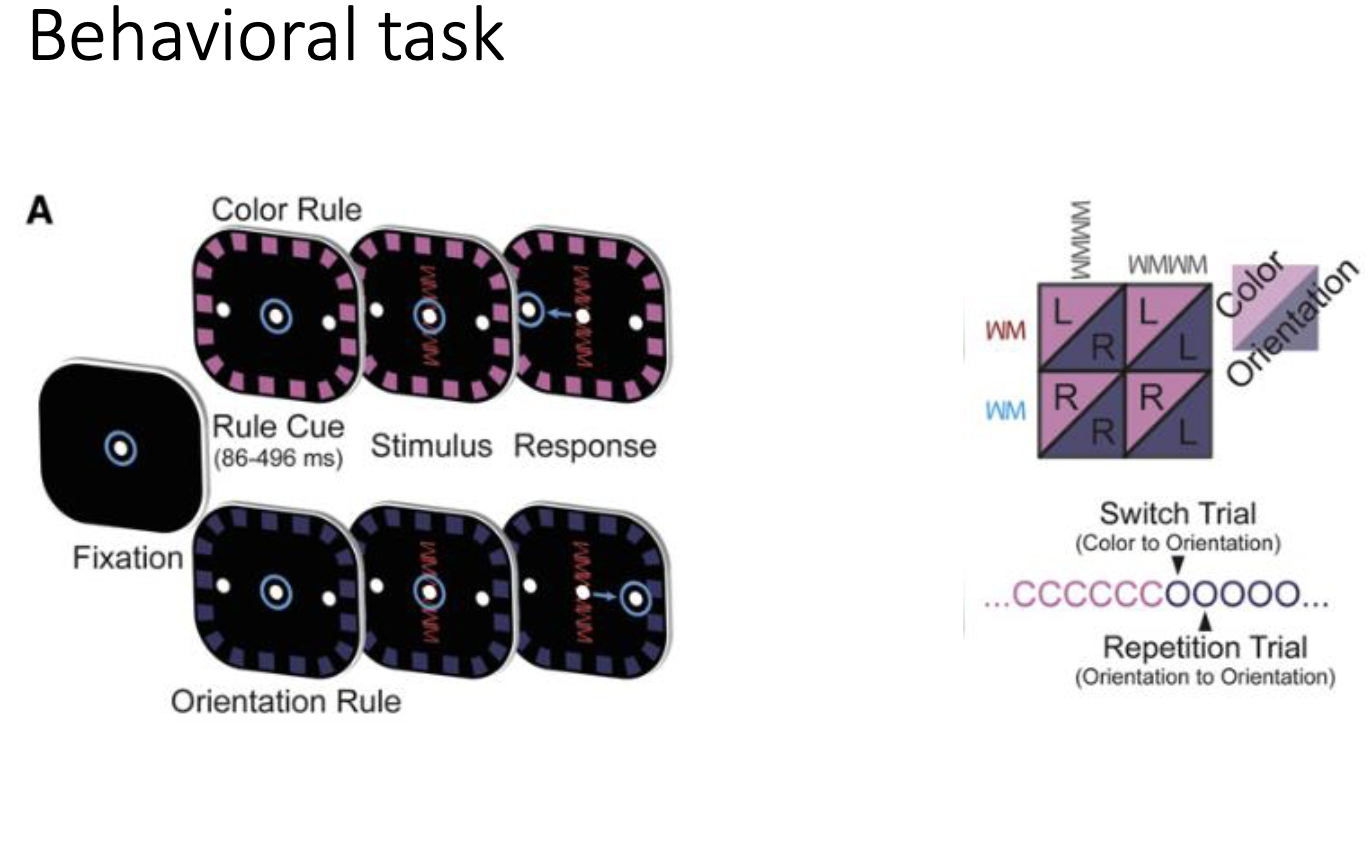Neural Oscillations pt. 2
1/9
There's no tags or description
Looks like no tags are added yet.
Name | Mastery | Learn | Test | Matching | Spaced |
|---|
No study sessions yet.
10 Terms
hierarchical cognitive control study
delta oscillations correspond with abstraction/hierarchical control with theta oscillations corresponding with working memory
rules in prefrontal cortex study
trained two monkeys to fixate on a central point and respond differently based on the color or orientation presented. with sets of rules that you prioritize one response over the other
The goal was to see what happens to PFC representation when you need to switch rules
how are rules related to the hierarchical model
a critical cognitive ability is the flexibility to change one’s behavior based on context. these context-dependent stimulus-response mappings are rules that are needed to change behaviors
behavioral task
fixation→ rule cue→stimulus→response

switch cost
there is a decrease in performance when switching from one task/response to another
orientation rule appears to be dominant
what area of the monkey’s brain was recorded
PFC- principal sulcus
PFC neuronal spiking activity was selective for rules but more neurons are selective for the orientation rule
LFP oscillation results
alpha and beta oscillations and synchrony increased
beta oscillation
levels of beta synchrony was stronger when comparing preferred vs, non-preferred rules
alpha oscillation
beta synchrony increased when a rule was selected
neuronal groups were more selective for the orientation rule and showed an alpha-band increase when the color rule was selected
was present when trying to inhibit the dominant rule (orientation)
summary of findings
in the lateral PFC, they found:
beta synchrony selects task-relevant rules (color and orientation)
alpha synchrony de-selects or inhibits a dominant but irrelevant rule (orientation)